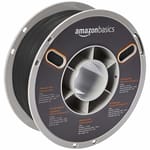What's Special?
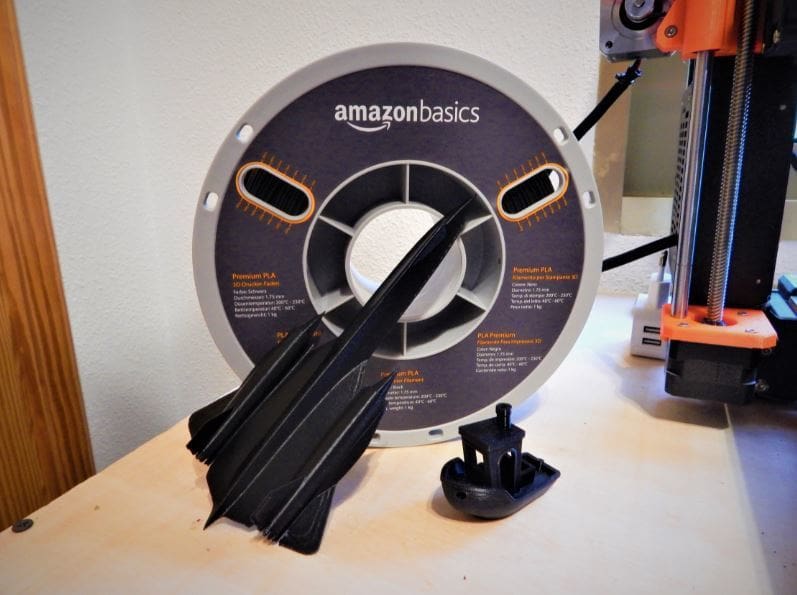
Almost everyone has heard of Amazon, the online retail giant. Recently, they have begun offering their own brand of filaments for 3D printing, marketing towards the everyday consumer and hobbyist.
The advantages of such a product are obvious: Amazon is a global company and well-known for its reliability. As the filament is their own product, it will always boast the impressively fast Prime shipping, and if you don’t like it, the Amazon return service is legendary. It’s also backed by an Amazon 1-year limited warranty.
As for their AmazonBasics Premium PLA, well, Amazon hasn’t skimped on quality. Boasting a plus or minus 0.05-mm precision and “specially engineered to reduce jamming”, this PLA filament sounds quite impressive right off the bat. Also, the spool itself has a very handy gauge on the side that allows you to approximate how much filament you have left – both in meters and by weight.
Although they do not specify if this is just a higher quality PLA or a PLA hybrid (much like PLA Plus), they advertise their Premium PLA as having enhanced strength and improved layer adhesion, leading to smooth, glossy parts for improved end products.
The AmazonBasics Premium PLA is offered in 1-kg spools, in both 1.75-mm and 3-mm diameters. There are a variety of colors available, from which we chose a spool of Black.
The Verdict
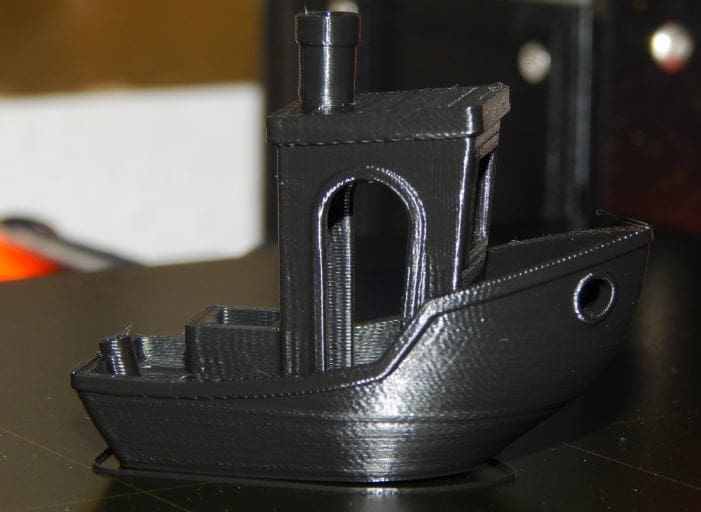
We tested our AmazonBasics Premium PLA on an Original Prusa i3 MK3S. The spool shipped neatly packaged in a recyclable cardboard box. It was vacuum sealed in a plastic bag with a silica desiccant pouch to avoid damage from humidity. The bag is resealable, so the filament can be safely stored when not in use.
All of our test prints were successful, and the prints have an intriguing, glossy finish. Reminding us of the slightly textured plastic used in many electronic devices, it is halfway between matte and shiny, and with a smooth but not slick feel to the surfaces.
Test #1: 3DBenchy
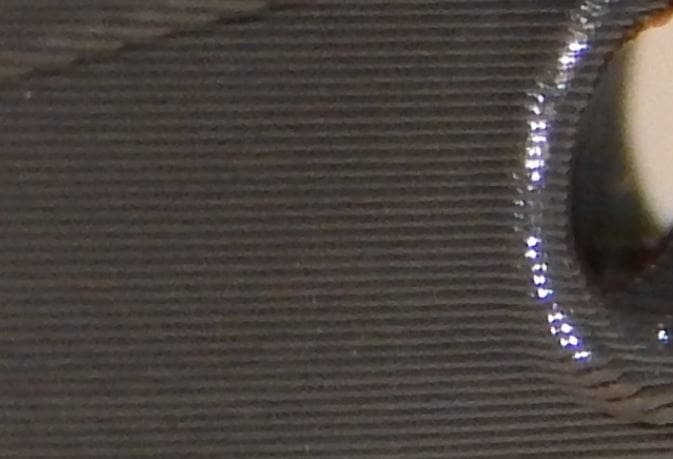
As usual, our first test print was everybody’s favorite tugboat, the 3DBenchy. Ours had no obvious issues while printing other than a bit of warping off of the print bed.
All of the details turned out very nice and crisp, with minimal stringing. Our close-up photo reveals clean, consistent layers with excellent adhesion, true to the advertised claims.
Test #2: Low-Poly Darth Vader Pencil Cup
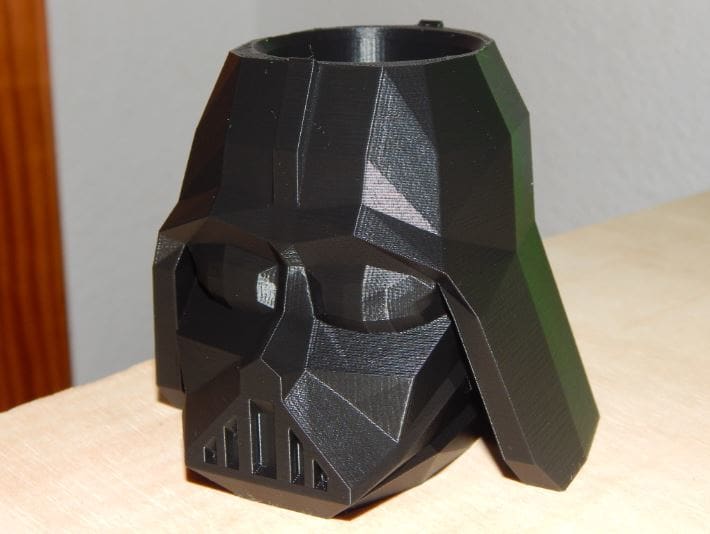
Our second test print of the AmazonBasics Premium PLA was a Low-Poly Darth Vader Pencil Cup by Tiago Santos. We decided this model would reveal any issues with surface finish or print warping, having a large number of flat surfaces.
All in all, it came out very well, with no issues at all. The warping from the print bed, which we saw in the Benchy, did not manifest itself here, so that issue is likely due to other factors and not the material itself.
The surface finish, as on the Benchy, is very nice and smooth, with crisp corners. The layers adhere so well that an inexperienced viewer may not be able to tell that it was 3D printed at all!
Test #3: SR-71A Blackbird
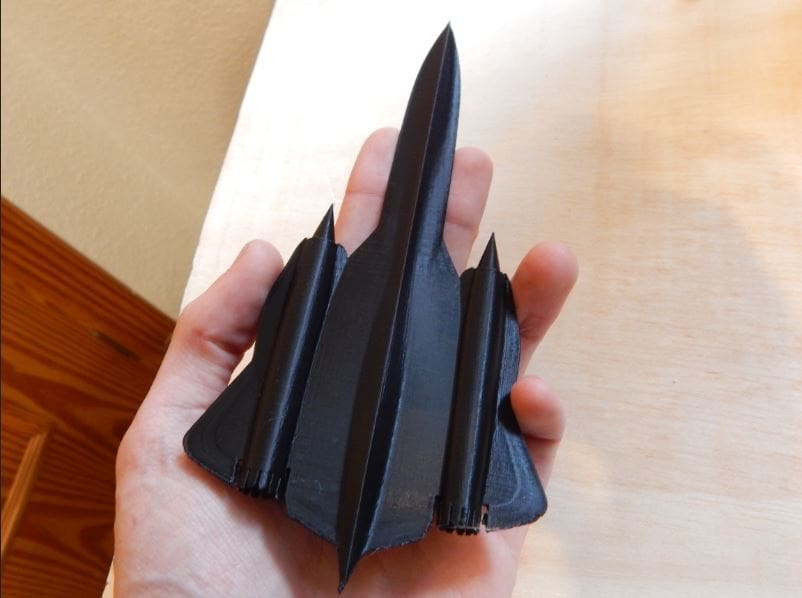
Our third and final test, inspired by the color of the filament, was a model SR-71A Blackbird by Cyril Bertinchamps.
This 3D print turned out so smooth and glossy that we had a hard time trying to get a good photo of it to show off the finish! The supports snapped off very cleanly, as if they were never there. There was almost no stringing in between the details. All in all, it was a very clean print!
Final Thoughts
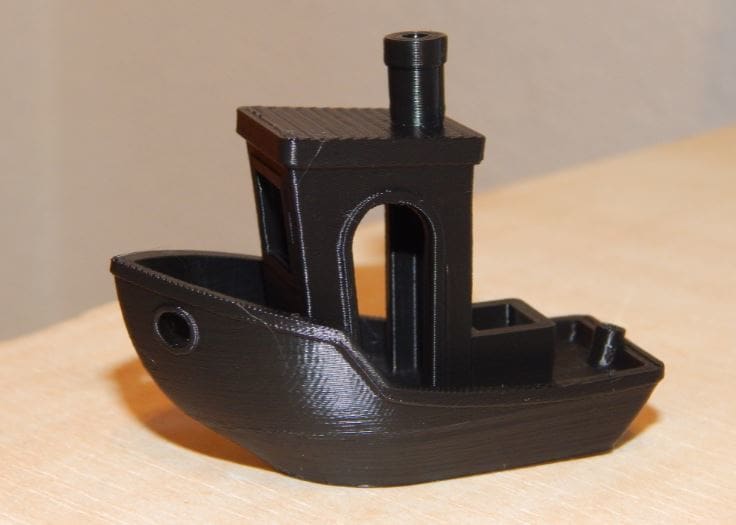
We really enjoyed using this filament. There were so few issues with 3D printing it that we had a hard time finding something to complain about.
The color and finish of the material are great, the supports on our third test came free amazingly well, and all of the small details in our prints came out nice and clean, with almost no stringing.
For the price, this filament is probably among the best in its class. We’d certainly recommend it to those looking for good quality on a budget.
Specs & Settings
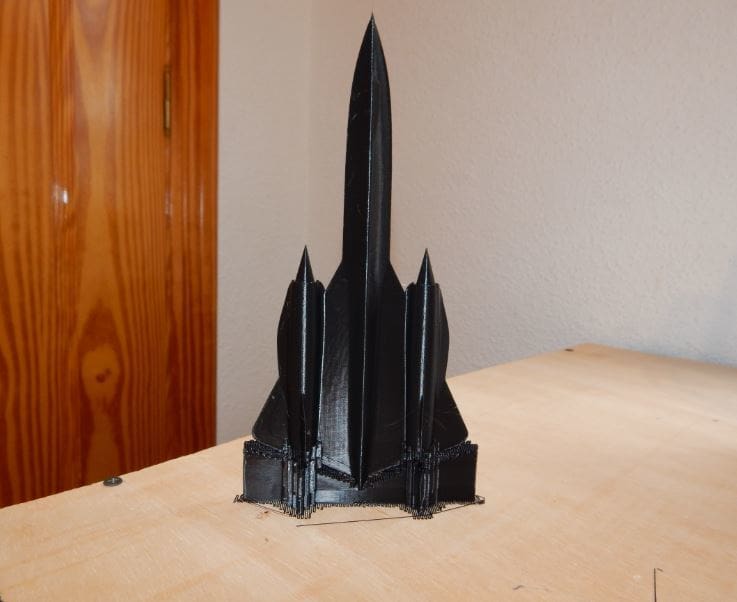
As this is a PLA, it will print fairly easily with most basic PLA profiles. However, with some fiddling, the results can go from good to great.
We 3D printed using the “Generic PLA” and “0.15 mm Quality” settings in Slic3r PE, with the following changes:
- Nozzle temperature: 215 °C
- Bed temperature: 55 °C
The manufacturer’s specs and settings are as follows:
- Nozzle temperature: 200–230 °C
- Bed temperature: 40–60 °C (not required)
- Filament diameter: 1.75 or 2.85 mm
How We Review
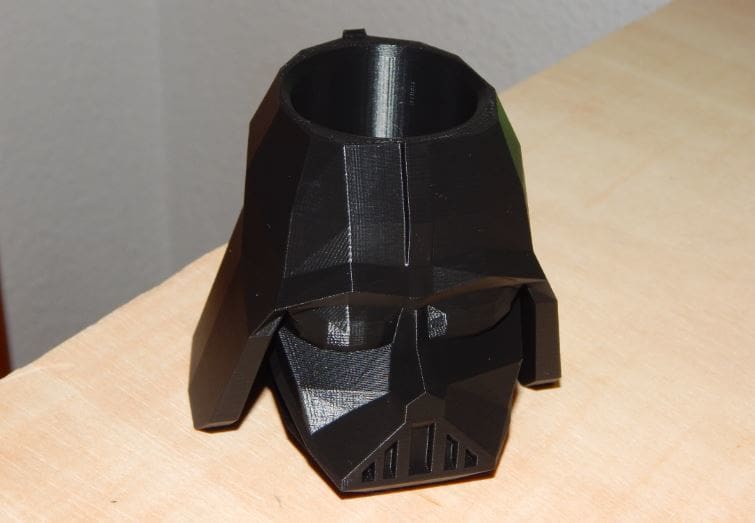
In conclusion, we’d rate the AmazonBasics Black Premium PLA an outstanding 9 out of 10, or 4.5 out of 5 stars.
For those curious about how we got to our conclusion, we review filaments using the following guidelines:
Each and every spool is brand-new and unopened.
Our first print is always a 3DBenchy. We use this to check for any inconsistencies in quality, color, and finish. After that, we print a few other models, the results of which we present to you. We slice the model using the latest version of Slic3r Prusa Edition. We do not post-process the prints in any manner; we simply remove them from the bed and cut off any support materials.
We start with the manufacturer’s recommended settings (where available). When the manufacturer offers a range of values, we go for the arithmetic mean. Therefore, if we are given a printing temperature range of 200–220 ºC, we would print at 210 ºC (unless noted otherwise).
For this review, we used an Original Prusa i3 MK3S in stock configuration. Statements regarding print quality are based on the printer’s ability and reputation to successfully print a wide variety of other filaments and models.
We would like to mention that every spool of filament can be slightly different, and filaments often vary greatly even within a small range. Simply fiddling with a single setting like retraction can have huge effects in print quality. This can make the difference between a disastrous fail and a wondrous success.
So, if you own a spool of this filament, we invite you to contribute in the comments below! Did you manage to get your prints to turn out? Did you have an interesting or strange experience? Let us know – we’d love to hear from you!
Feature image source: Emmett Grames / All3DP
CERTAIN CONTENT THAT APPEARS ON THIS SITE COMES FROM AMAZON. THIS CONTENT IS PROVIDED ‘AS IS’ AND IS SUBJECT TO CHANGE OR REMOVAL AT ANY TIME.
